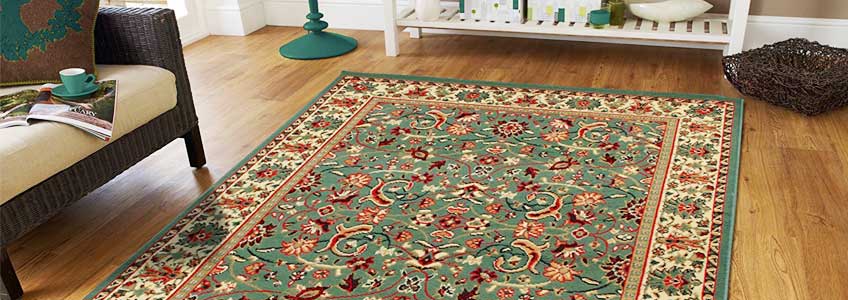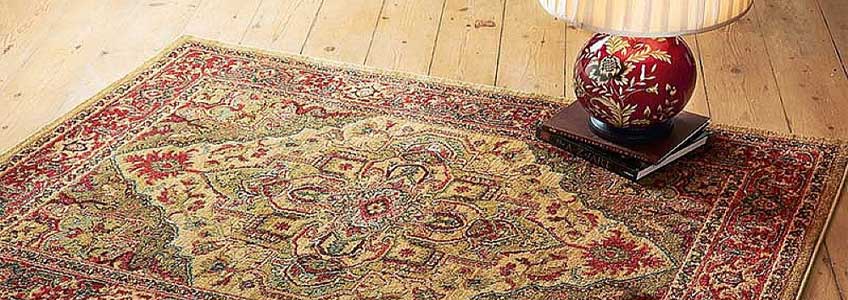How to look after your Persian or Oriental rug?
A handmade Persian rug is very likely one of your major home furnishing purchases and just because it is on the floor does not mean it cannot be looked after very well. Your rug should both reflect your character, your spending power and perfectly suit your room colours and use. It is an artisan product crafted with care and love by weavers in Central Asia and should be cared for so that it mellows with age and becomes a cherished family heirloom.
Ask your rug dealer for his or her advice as the type of rug and the flooring it will be laid on will dictate the type of underlay. The underlay will serve many uses- it will add some comfort to a rug laid on a hard floor, cushioning the weight of feet and thus protecting crushing of the pile; it will also protect the back of the knot from abrasion, lifting the rug off the hard surface and protecting it from heat ( ask for special underlay for underfloor heating )and damp ; it will allow dust and dirt to fall through the rug which will help avoid the build-up of particles which will otherwise act as a sandpaper abrasion mix at the base of the pile; lastly, it will, of course, reduce the movement of the rug, making it safe and perfectly positioned.
Furniture Cups. A larger rug will have furniture on it and if the feet of your sofa, chairs or table have sharp ends you should use furniture cups. These can be bought online and can be plastic, wood, brass or brushed metal. These will stop your rug pile from being crushed and avoid holes forming with many minuscule movements.
Moths! Now consider how the furniture is sitting. If you have a large heavy piece of furniture under which the rug is lying you must ensure that this dark and quiet space is thoroughly vacuumed along with the visible parts. Moths!!! They love dark undisturbed places with a plentiful supply of wool or silk to eat. Ideally, you should also have a pheromone moth trap in the room too – especially with any rug made in Afghanistan. For some reason they go crazy for this wool.
Sunshine. If you are lucky enough to live in a country with abundant strong sunshine you must consider the effects of UV light on your rug- obviously, a conservatory or a patio windowed room in particular needs clear UV filter screen on the glass. Whatever your vendor tells you, ALL rugs fade- at least all rugs with natural materials.
Turning. Ideally you should also consider turning your rug every year or so so that any fading is evened out – however, this is rarely done as most rugs look best with the pile lying in a certain direction so they are left as is. Turning a rug will also even out feet tread wear patterns – but this only happens in areas of very heavy traffic or over the course of decades, by which time your rug has aged with you and you accept and love it.
Weekly Upkeep. Modern vacuum cleaners are FAR too efficient and all that satisfying fluff and dirt in your viewable bag is mostly bits of your rug being stripped. You do not need to vacuum on a high power with the revolving brush – please just use suction as this will suck out what needs to be removed. Avoid vacuuming the fringes as these are, in a handmade Persian or Oriental rug, integral warp threads and are protection against the knots being damaged or destroyed.
A stitch in time– If you see any signs of the rug having been damaged then you should have it restored immediately. The same goes for discovering that your party guest spilled a glass of red under the sofa. Stains lock in over time and repairs become very pricey!
Cleaning your rug. You go to the dentist and doctor, you service your car, you clean your oven ….but most people think a rug will last forever without a proper service. Whilst they can be miraculously hard wearing items they do need a specialist soaking every 5 years to increase thie longevity and maintain the look for which you bought it. This will remove the build-up of oils ( outside tar and chemicals, human sweat and animal grease ) from the pile and restore it to its former softness and colours. Its also hygienic to remove all that gunk- dead skin from humans and dander from animals in particular.
LOVE YOUR RUG!



